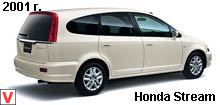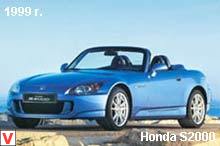The CRX model (in Japan was called the Honda Ballade Sports CR-X) takes a worthy place in the Honda lineup. The car debuted in 1984 and positioned as a compact front-wheel sports hatchback. The first generation of this car in some regions was sold under the name Honda Civic CRX. The name “CRX” and what stands behind it caused a lot of controversy, the most popular are the following decoding: “Civic Renaissance Model X”, “Civic Racing eXperimental” and “Compact Renaissance X”. The car was designed for all world markets, but each of them had its own characteristics.
Thus, in the European market, Honda CRX cars were sold in 4-seater versions, while in the USA the model was positioned as a compact and economical 2-seater sports car. And such a characteristic is more than justified: 1, The 3-liter 70-strong version of the Honda CRX hit all the fuel consumption indicators: 3.9 liters per 100 km on the highway and 4.6 liters in the city. A more powerful version with a 1.6-liter ZC engine with a capacity of 125 hp was delivered to European markets. The second generation came out in 1987. The technical component of the car has been completely redesigned. The chassis underwent significant changes in 1987.
In the first generation, a torsion beam was used in the front and a semi-independent rear suspension; on the second, a transverse two-lever front and a fully independent five-lever rear were appeared. At the beginning of the release of the CRX II, there were 2 modifications: 1.5X, on which a 1.5-liter inline 4-cylinder SOHC engine is installed, developing 105 HP. (in the case of an automatic transmission - 100 hp), and Si, equipped with a 1.6-liter inline 4-cylinder DOHC engine with a capacity of 130 hp.
In September 1989, Honda also added to the range of engines a new B16A with a displacement of 1,595 cm³ . The B16A engine was equipped with a system for changing the time and height of the valve lift, the full name of which is Variable Valve Timing And lift Electronic Control, or simply VTEC. This system allowed to significantly increase the return at high speeds, while maintaining low fuel consumption and stable idling at low.
The B16A engine produced 150 hp. on the European model 1.6i-VT (where it was designated as B16A1) and 157 l. from. on the Japanese model SiR. The salon, thanks to the adjustable seats, became comfortable and comfortable.
Models equipped with VTEC, also received new bumpers, optics, hood, brakes, instrument panel and some other details. In addition to this, many of these changes received current non-VTEC models. One of the options for the Japanese market was a glass roof, a fixed glass panel that runs from the top edge of the windshield to the top edge of the tailgate. Despite its Japanese origin, this detail is also occasionally found in other markets. In 1992, Honda replaced the CRX with a new model with a removable roof, also based on the Civic, known as the Honda Civic Del Sol, also known as the Honda Del Sol.
The Spanish name Del Sol translates as "from the sun." The CRX name was not used in the Del Sol line, as it was a different ideology machine. The model was a double car in the back of a Targa. In the US, the model was introduced in 1993. After the absolutely square forms of the Honda CRX, this cute little car with smooth contours of the Targa body immediately fell in love with young people. The car was not a cabriolet in the full sense of the word, having a removable roof over the driver and passenger, which when removed was removed in the trunk, and the rear window to be lowered for a “convertible” feeling. When placed in the roof, the trunk was reduced in volume from 297 to 235 liters.
In the North American market, the Honda Del Sol was presented in two trim levels, S and Si. The base model S (named VXi in Japan) was supplied with a 1.5 liter SOHC engine and 16 valves and forged wheels with a radius of 13 ". The Japanese VXi model was equipped with a D15B engine. It was an entry-level VTEC engine with a capacity of 130 liters. with., corresponding to the power of the model 1,6 Si. The top version of Si (known in the European market as ESi) was supplied with a 1.6-liter SOHC engine and 16 valves.
Also, on the Si were installed in the standard alloy wheels 14 ", offered as an option in body color on models painted in Samba Green color, electrically adjustable side mirrors, cruise control, disc rear brakes and front anti-roll bar. Components with VTEC (known as SiR in Japan and VTi in Europe) were presented to the public in 1994 in the United States with a 160-liter B-series engine. with., the same as in the model Civic SiR. The model was fitted with increased front brakes, a thicker front anti-roll bar, an additional rear stabilizer and wider tires. The only options on all models were a rear spoiler, floor mats, an automatic transmission, and air conditioning.
An option called Trans Top was available in Japan. The electric mechanism, which cleaned the roof in the trunk by pressing the corresponding button. In Europe, this option was available on ESi and VTi models. Del Sol production and sales ended in 1997 in the United States and in 1998 in other markets.







